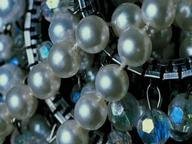Quiz Answer Key and Fun Facts
1. Which piece of jewellery is used to adorn the front of an Asian turban, traditionally worn by Hindu and Muslim princes?
2. Grab your pardner by the hand and do-si-do along to native Western music while wearing your smartly pressed chequered shirt, cowboy hat and kerchief. Which addition to this garb is sometimes adorned with jewellery?
3. Which item of rigid neck jewellery was an addition to the fashionable attire worn by wealthy people during the Bronze age and is still worn today?
4. Which Indian bridal accessory is a chain worn along the central hair parting?
5. What was the name of the famous French jewellery designer who crafted most of his items out of glass and enamel?
6. What is so unusual about the Maquech brooch which is made in Mexico?
7. Where on the body would you place an adornment called a gauge, plug or flesh tunnel?
8. With its distinctive inscription marked into gold, what is another name for the official signet ring worn by the Pope?
9. What was the name given to the ornate silver chain worn around the waist of nurses or housekeepers, often with scissors, watch and keys attached?
10. The distinctive neck rings worn by the Padaung women of Myanmar are traditionally made from which material?
Source: Author
Plodd
This quiz was reviewed by FunTrivia editor
kyleisalive before going online.
Any errors found in FunTrivia content are routinely corrected through our feedback system.


